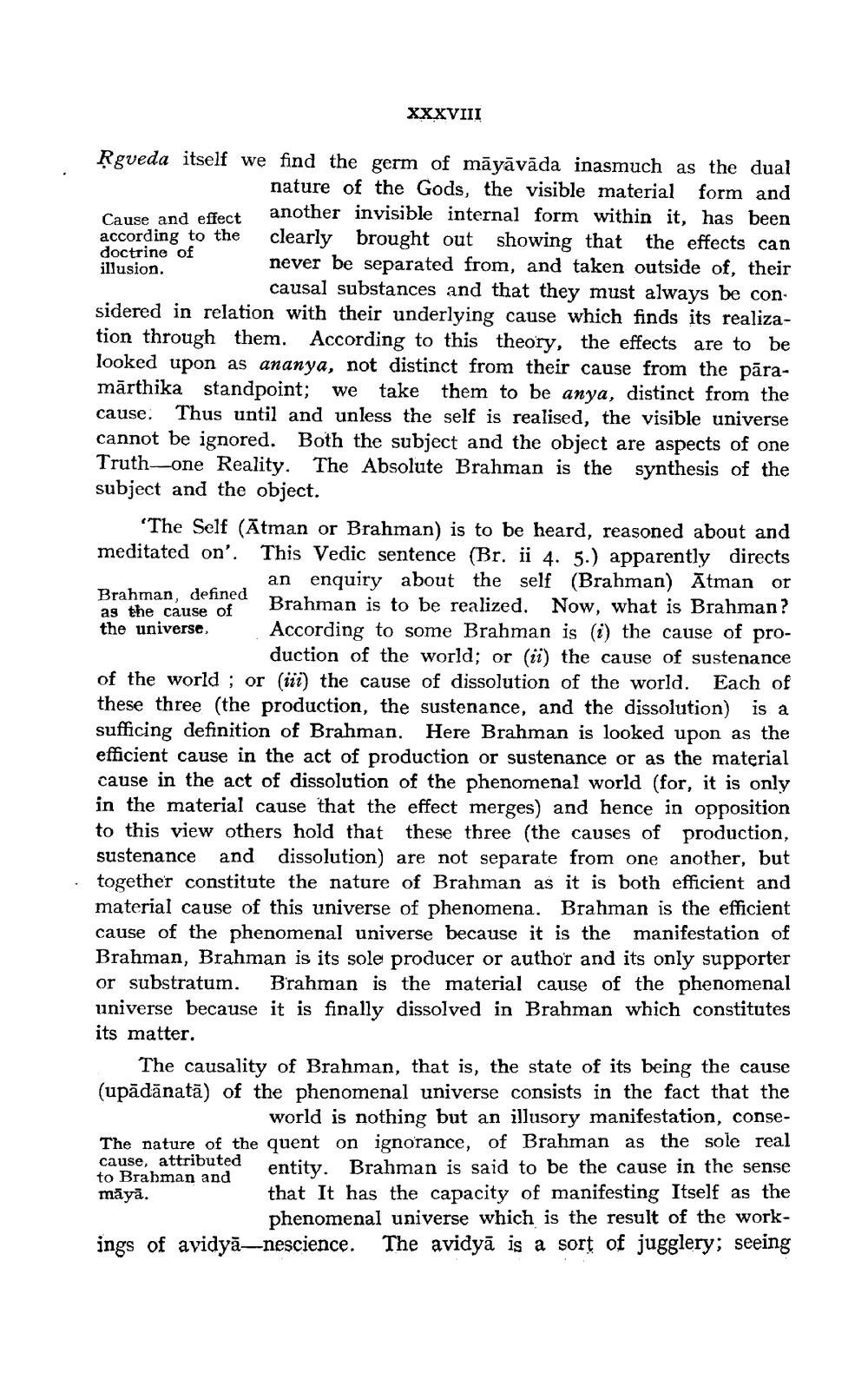________________
XXXVIII
Rgveda itself we find the germ of māyāvāda inasmuch as the dual
nature of the Gods, the visible material form and
+ another invisible internal form within it, has been according to the clearly brought out showing that the effects can doctrine of illusion.
never be separated from, and taken outside of, their
causal substances and that they must always be considered in relation with their underlying cause which finds its realization through them. According to this theory, the effects are to be looked upon as ananya, not distinct from their cause from the pāramārthika standpoint; we take them to be anya, distinct from the cause. Thus until and unless the self is realised, the visible universe cannot be ignored. Both the subject and the object are aspects of one Truth-one Reality. The Absolute Brahman is the synthesis of the subject and the object.
'The Self (Atman or Brahman) is to be heard, reasoned about and meditated on'. This Vedic sentence (Br. ii 4. 5.) apparently directs
an enquiry about the self (Brahman) Ātman or Brahman, defined as the cause of
Brahman is to be realized. Now, what is Brahman? the universe, According to some Brahman is (i) the cause of pro
duction of the world; or (ii) the cause of sustenance of the world ; or (iii) the cause of dissolution of the world. Each of these three (the production, the sustenance, and the dissolution is a sufficing definition of Brahman. Here Brahman is looked upon as the efficient cause in the act of production or sustenance or as the material cause in the act of dissolution of the phenomenal world (for, it is only in the material cause that the effect merges) and hence in opposition to this view others hold that these three (the causes of production, sustenance and dissolution) are not separate from one another, but together constitute the nature of Brahman as it is both efficient and material cause of this universe of phenomena. Brahman is the efficient cause of the phenomenal universe because it is the manifestation of Brahman, Brahman is its sole producer or author and its only supporter or substratum. Brahman is the material cause of the phenomenal universe because it is finally dissolved in Brahman which constitutes its matter.
The causality of Brahman, that is, the state of its being the cause (upādānatā) of the phenomenal universe consists in the fact that the
world is nothing but an illusory manifestation, conseThe nature of the quent on ignorance, of Brahman as the sole real cause, attributed
entity. Brahman is said to be the cause in the sense to Brahman and māyā.
that It has the capacity of manifesting Itself as the
phenomenal universe which is the result of the workings of avidyā—-nescience. The avidyā is a sort of jugglery; seeing




